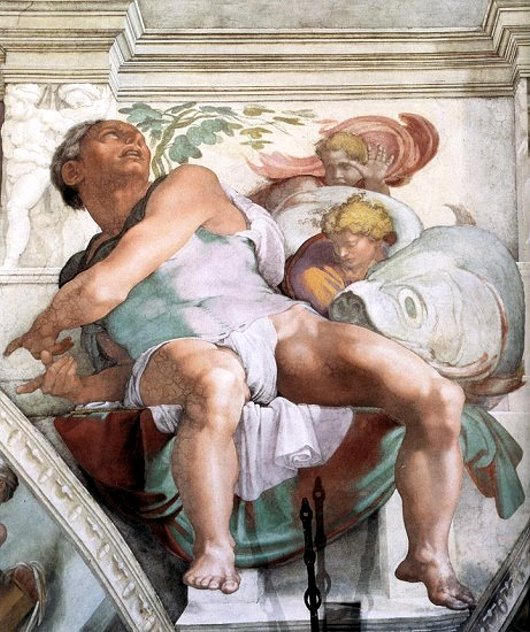500 years ago today, Michelangelo was finishing work on the ceiling of the Sistine Chapel. One of the most visited, discussed, celebrated, and indeed largest paintings in the history of art. An anniversary is always a good excuse for a blog post, and given that, at very a conservative estimate, I’ve been to the chapel in a professional capacity some two thousand times, it seemed one I couldn’t let pass by unnoticed. No matter how many times one visits, the chapel constantly offers new points of view and previously unnoticed details. The jostling of thousands of visitors can, on the other hand, be more than a little tiresome at times. But with a little judicious timing, and by finding the best spots, even when crowded its delights need not be lost.
When I enter with clients I always make a bee-line for the far end wall. Whilst today we, the paying hoi-polloi, enter under the Last Judgement (completed nearly 30 years after the ceiling), Popes, Cardinals, and their entourages have entered for over 500 years from the large brown doors at the centre of the opposite end; this was the initial viewpoint that Michelangelo had in mind. Plus it’s usually a little less busy, and one can usually find a free spot on a bench to make the most of the view.

Jonah, detail, Sistine Chapel ceiling. (Photo: Wikimedia Commons)
From this end wall, as one looks to the centre of the opposite end of the ceiling (directly above the centre of the Last Judgement), a large muscular figure catches one’s eye. This is Jonah, he is shown with his head thrown back, his legs hanging forward. His position is in direct contrast to the physical form of the vault on which he is painted: while Jonah leans back the ceiling curves towards us. Michelangelo’s manipulation of the perspective belies his study of and work in statuary; he paints like a sculptor. By Jonah’s side a fish nibbles at his thigh, an allusion to the big fish, or whale, which swallowed him. Jonah’s presence on the ceiling is as one of the prophets, and his prophecy is that of the Resurrection of Christ; the days and nights Jonah spent in the belly of the fish foretell the days and nights Christ would spend in his tomb, while Jonah being spat out is the prophecy of the Resurrection.
That Jonah catches one’s eye when entering the chapel is a both a practical and allegorical artistic device. His head is thrown back so that we naturally follow his line of sight. We look to see what he is looking at, which sets our eyes moving towards us along the central panels of the ceiling with their stories of the Creation and of the life of Noah. When we reach the end of the ceiling, the prophets along the sides lead our eyes back round to Jonah, and the promise of the Resurrection. If the ceiling of the Sistine Chapel is an expression of the promise of the coming of Christ, Jonah is its Alpha and Omega; a wonderful reminder that artists spend a great deal of time getting us looking in the right direction.
The Sistine Chapel is, of course, part of my “Vatican City” itinerary
Sistine Chapel, Vatican Museums
Viale Vaticano
Mon-Sat 9am-5.30pm (ticket office closes 4.20pm)
16 euros (20 euros with reservation fee)


what does IONAS really mean is Jonah looking up at god?
Reading Miles Ungers book…Six Masterpieces. Thank you for the insight. Someday I’ll visit. But for now, I’m in Payson, Arizona.